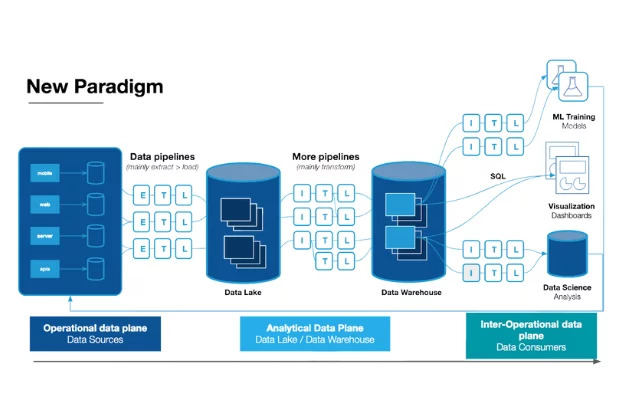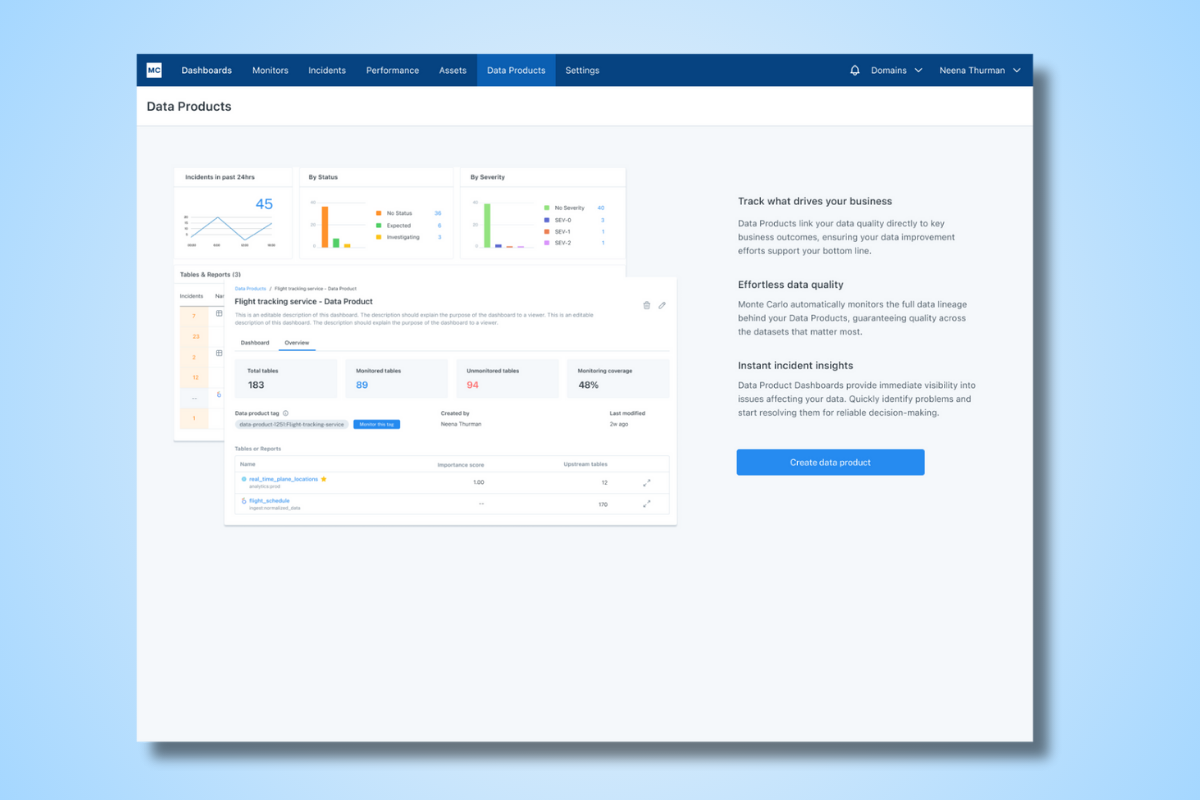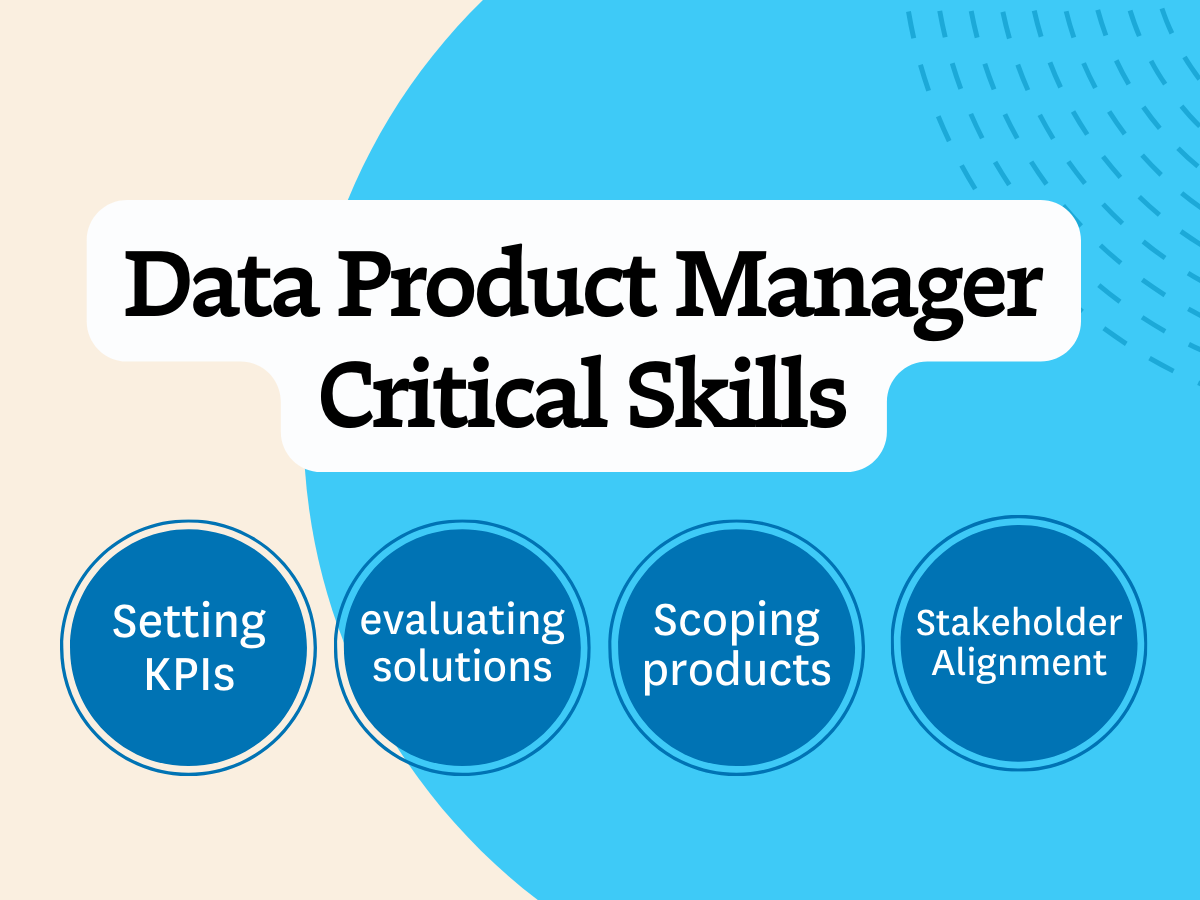How to Build Data Products Your Company Will Actually Use

Across both public and private sectors, more organizations are adopting a “data-driven” mindset—or, at least, data-driven messaging. But in reality, most aren’t prepared for the reality of what it takes to truly make decisions based on data.
Teams have to be aligned about what data is used and how decisions are made. Data has to be accessible and available to the right decision-makers at the right time. And someone has to be responsible for collecting, cleaning, storing, and staying accountable for the quality of all that data. But too often, there’s more focus on producing flashy dashboards than investing in data products that actually provide meaningful value to a business.

We recently discussed this state of “data-driven” affairs with Afua Bruce, a seasoned leader with an incredibly diverse background. Afua has served as the former Chief Program Officer at DataKind, Data Strategy Lead for the FBI, a software engineer at IBM, and Executive Director of the National Science and Technology Council under President Barack Obama. So it’s safe to say she has a unique perspective on how organizations of all shapes and sizes can succeed and fail when it comes to building data products.
In our recent talk, Afua drew from her real-world experience to share some best practices on how data teams can improve their odds of building data products their companies will actually want to use. Here are six of Afua’s top tips.
- Create a vision for positive change
When you’re building a new data product—or really, looking to implement any kind of change in an organization—you need to create a vision that helps stakeholders understand why they should care and what the impact will be.
Afua recommends data teams start by understanding how the product aligns with your company’s overall vision. “You want to understand your organization’s strategy, vision, and mission,” Afua says. “You may not spend a lot of time reading those wonderfully worded, often beautifully designed pages on your company’s website, but you’ll want to refer to them as you’re building a business case for the work that you’re doing.”
Then, clearly outline and describe how the finished product will change stakeholders’ lives for the better. Paint a clear picture of how their teams will be able to operate more effectively. And as you build out the product, look for opportunities to create and promote short-term wins.
“Even if what you’re building isn’t set to be delivered for an entire year, you want to show something of value at least by the three-month mark,” Afua says. “Really show people: Here are some things that we’re doing well in order to build excitement and start building momentum.” Keep building on those early wins as you progress to keep up stakeholder investment and support in your initiative.
- Seek alignment early—with the right people
Without alignment from the right people across teams, your work may run into insurmountable roadblocks—or you may find that you’ve wandered down the wrong path altogether.
Afua shares one example of change management gone horribly wrong. She had just started working with an organization that had recently completed a merger, and according to the leaders, everything was going beautifully. But as Afua began speaking with individual engineers and salespeople, she realized the truth on the ground was significantly different than what the executive management had described. Ultimately, the organization ended up having to severely cut back and reduce staff by about 75%.
What went wrong here? Afua attributes the failure to a lack of alignment. “There hadn’t been a clear vision and a clear strategy that encompassed both companies,” she says. “And if the executive managers had engaged the right people at the right levels of their organization, they probably would have learned that things weren’t going well. People were still using old processes and doing workarounds to avoid change. Had the right people been engaged, the executive management team would have known that and been able to influence that discussion and get people moving.”
Heed this cautionary tale when building a new data product: get the right people aligned around your vision by engaging with the stakeholders who will be instrumental to the success of your initiative. This means understanding who will be using your product and how, who needs to be consulted or informed along the way, and who will benefit the most from your product. (The RACI matrix can be a handy framework to use when identifying these data stakeholders.)
Afua advises using the following questions to identify your stakeholders:
- Who has the power to turn on and turn off the solution?
- Who is open to making decisions based on the solution?
- Who will maintain and update the solution?
“Your answers to these questions will help you further refine what your design looks like, and help you understand what your messaging needs to look like to different people,” says Afua. “Then you can really build products and make sure they are of use and will continue to be used by your organization.”
- Create urgency
Most organizations have countless opportunities to use data products to improve the business—so make sure you create a sense of urgency around your initiative so people understand why now is the time to spend resources on your project.
“Figuring out why this change needs to happen, why this new product matters, why people should care about it at this time, and making sure that sense of urgency is clear to folks is really important,” says Afua.
Clearly articulate what your company will be able to accomplish with your product that they couldn’t before, and how it will positively impact the bottom line. Justify the time and resources you’re spending on developing the data product by showing how it will generate a meaningful return on the investment.
- Follow up—and follow through
As you progress along with your data product development plan, constantly update your stakeholders on how things are going and what you need—and reinforce your vision. “You want to overcommunicate to make sure that as you’re asking for approvals of time or money to work on your design or development, that you’re continuing to communicate that vision,” says Afua.
Set expectations for what progress and success will look like, both during development and once your initiative is launched. Create clear guidelines—like SLAs, SLOs, and SLIs—for your product to keep all your stakeholders on the same page.
And don’t underestimate the importance of process as you build your data product. Afua is a big fan, saying, “Process can really help orient people to what needs to get done so they can focus on their actual work—as opposed to figuring out how to do their work or how to get their work approved.”
Afua advises teams to invest in building processes around data quality, completeness, naming conventions, and clear instructions for access and ownership. Create a structure that clearly defines who can access your data product, who owns the data that powers it, and who is responsible for maintaining it.
“Structure allows freedom,” says Afua. “When you provide a strong structure for people to exist in, they can spend their time and effort thinking about how to make things work better.”
Another area that deserves a clear and formalized process? Guarding against bias. Bias can creep into data in any company, but working in the government and non-profit sector gave Afua a firsthand look at how the manual collection of data about human behavior can be especially vulnerable. She advises teams to create processes to ensure your data is complete and representative.
“Have you inserted different sorts of bias in relation to socioeconomic standing, for example, or to disabilities or race?” Afua says. “Defining a clear process for identifying sources of bias and mitigation strategies is really important.”
- Compile a diverse team
Assembling a diverse team with a robust range of perspectives will help you build a better product. This means ensuring you have representation from a diversity of professional experiences (such as data analytics, data engineering, and data science) as well as personal backgrounds, including gender, sexual orientation, geography, and ethnicity. Every viewpoint provides a new perspective on how, why, and when your data product may be used.
“I really learned the importance of this most clearly during my time at the FBI,” Afua says. “I was not an agent, but as I was pushing out new data products or new technology-based changes, I made sure I had both agents and non-agents represented in my coalitions. I knew that at different points in time, people would need to hear the message about why this change mattered and why this product was good from different people.”
By using both agents and non-agents as partners and advocates for her products, Afua was able to more successfully launch and gain alignment around data-driven initiatives.
- Don’t forget data quality
Finally, Afua advises data product teams to prioritize data quality: defining it, communicating it, and democratizing it.
She points to research from MIT Sloan that estimates the cost of bad data to be about 15 to 25% of revenue for most companies. That could mean a significant impact on the bottom line of your product’s success, so Afua recommends evaluating your data quality according to a six-dimensional framework.
- Accuracy: How well does the piece of information reflect reality?
- Completeness: Does this data fulfill your expectations of what’s comprehensive? Does it have everything there that you think it should have?
- Consistency: Does the information stored in one place match relevant data stored everywhere? Is there a single source of truth? If there isn’t, are all of the sources of truth-telling you the same thing?
- Timeliness: When is the information available and is it available when you need it?
- Validity: If the information is in a specific format, does it follows business rules? Is it in a usable format for analysis and for presentation?
- Uniqueness: Is this the only instance where this information appears in the database?
Again, defining a clear process is key here. Afua advises teams to build data quality checks into their roadmap and workflow as an ongoing priority.
“If your data quality is there, people can trust the analysis that you’ve done and the products you’ve created,” says Afua.
Thanks to Afua for sharing her incredible expertise with us! Don’t miss out on future talks with data leaders: follow us on LinkedIn to stay up-to-date on our webinars, events, and conversations.
Interested in learning more about the Monte Carlo data observability platform? Schedule some time to speak with us using the form below:
Our promise: we will show you the product.
 Product demo.
Product demo.  3 Steps to AI-Ready Data
3 Steps to AI-Ready Data  What is a data mesh--and how not to mesh it up
What is a data mesh--and how not to mesh it up  The ULTIMATE Guide To Data Lineage
The ULTIMATE Guide To Data Lineage 





